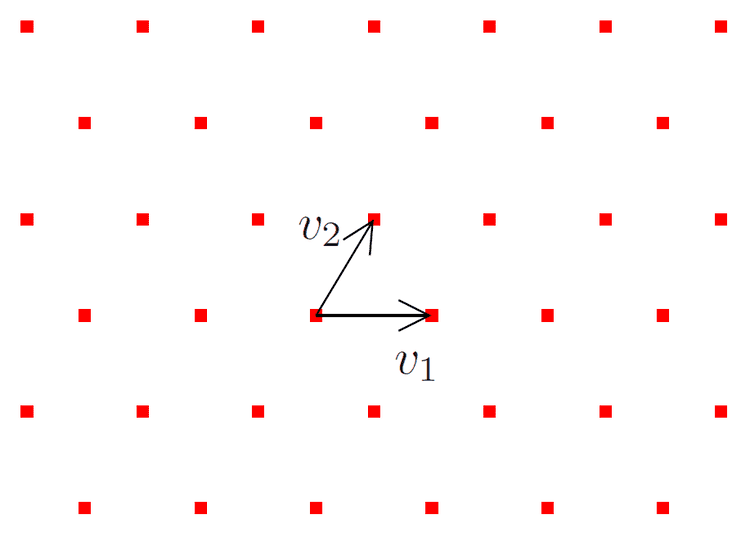 | ||
In digital signal processing, multidimensional sampling is the process of converting a function of a multidimensional variable into a discrete collection of values of the function measured on a discrete set of points. This article presents the basic result due to Petersen and Middleton on conditions for perfectly reconstructing a wavenumber-limited function from its measurements on a discrete lattice of points. This result, also known as the Petersen–Middleton theorem, is a generalization of the Nyquist–Shannon sampling theorem for sampling one-dimensional band-limited functions to higher-dimensional Euclidean spaces.
Contents
In essence, the Petersen–Middleton theorem shows that a wavenumber-limited function can be perfectly reconstructed from its values on an infinite lattice of points, provided the lattice is fine enough. The theorem provides conditions on the lattice under which perfect reconstruction is possible.
As with the Nyquist–Shannon sampling theorem, this theorem also assumes an idealization of any real-world situation, as it only applies to functions that are sampled over an infinitude of points. Perfect reconstruction is mathematically possible for the idealized model but only an approximation for real-world functions and sampling techniques, albeit in practice often a very good one.
Preliminaries
The concept of a bandlimited function in one dimension can be generalized to the notion of a wavenumber-limited function in higher dimensions. Recall that the Fourier transform of an integrable function
where x and ξ are n-dimensional vectors, and
Similarly, the configuration of uniformly spaced sampling points in one-dimension can be generalized to a lattice in higher dimensions. A lattice is a collection of points
where the vectors
The theorem
Let
Reconstruction
The generalization of the Poisson summation formula to higher dimensions can be used to show that the samples,
where
where
As an example suppose that
Aliasing
The theorem gives conditions on sampling lattices for perfect reconstruction of the sampled. If the lattices are not fine enough to satisfy the Petersen-Middleton condition, then the field cannot be reconstructed exactly from the samples in general. In this case we say that the samples may be aliased. Again, consider the example in which
A simple illustration of aliasing can be obtained by studying low-resolution images. A gray-scale image can be interpreted as a function in two-dimensional space. An example of aliasing is shown in the images of brick patterns in Figure 5. The image shows the effects of aliasing when the sampling theorem's condition is not satisfied. If the lattice of pixels is not fine enough for the scene, aliasing occurs as evidenced by the appearance of the Moiré pattern in the image obtained. The image in Figure 6 is obtained when a smoothened version of the scene is sampled with the same lattice. In this case the conditions of the theorem are satisfied and no aliasing occurs.
Optimal sampling lattices
One of the objects of interest in designing a sampling scheme for wavenumber-limited fields is to identify the configuration of points that leads to the minimum sampling density, i.e., the density of sampling points per unit spatial volume in
Optimal sampling lattices have been studied in higher dimensions. Generally, optimal sphere packing lattices are ideal for sampling smooth stochastic processes while optimal sphere covering lattices are ideal for sampling rough stochastic processes.
Since optimal lattices, in general, are non-separable, designing interpolation and reconstruction filters requires non-tensor-product (i.e., non-separable) filter design mechanisms. Box splines provide a flexible framework for designing such non-separable reconstruction FIR filters that can be geometrically tailored for each lattice. Hex-splines are the generalization of B-splines for 2-D hexagonal lattices. Similarly, in 3-D and higher dimensions, Voronoi splines provide a generalization of B-splines that can be used to design non-separable FIR filters which are geometrically tailored for any lattice, including optimal lattices.
Explicit construction of ideal low-pass filters (i.e., sinc functions) generalized to optimal lattices is possible by studying the geometric properties of Brillouin zones (i.e.,
Applications
The Petersen–Middleton theorem is useful in designing efficient sensor placement strategies in applications involving measurement of spatial phenomena such as seismic surveys, environment monitoring and spatial audio-field measurements.
